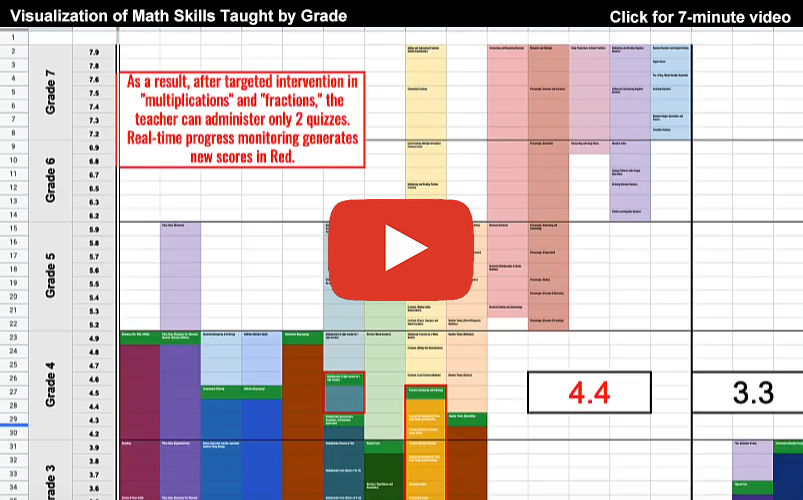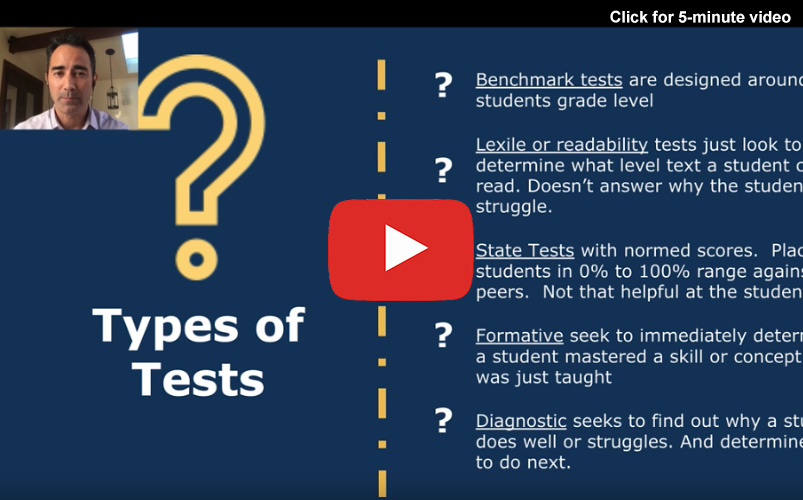There are many kinds of assessments used in education to evaluate student learning, identify strengths and challenges, and aid in lesson planning, and they often take the form of online tools. This article will explore the strengths and weaknesses of some of these key methods of evaluation.
What are summative assessments?
Summative assessments help educators judge how a student is performing relative to other students at a point in time. These tests or evaluations provide evidence that students have met the learning outcomes of an instructional unit. This sort of assessment is common in education for evaluating students at the end of an instructional unit, typically in a high-stakes environment; some examples are chapter tests, midterm exams or finals, or a test to successfully complete a subject or grade. Sometimes rather than a test, a summative evaluation of a project or presentation meets the goal of assessing student achievement.
Summative assessments can also lead to surprise and disappointment if the results are not as good as expected. They don’t explain why a student is having trouble with a concept. It’s important to understand how two other types of assessments–formative and diagnostic–play helpful roles in setting and achieving those expectations so that a student can succeed.
There are several types of summative tests, but here are three common examples:
- Benchmark Tests: Designed around a grade level in a specific learning area. The downside of a benchmark test is that it won’t tell you if students are many years above or below a specific grade level.
- Lexile or Readability Tests: Used to determine the level at which a student can read text. These tests don’t reveal why a student is struggling, just where they are.
- State Tests: Normed assessments and standardized tests that place students in a percentile relative to their peer group, typically from 0% to 100%–for example, the end-of-year Smarter Balanced tests. The downside of these tests is that they don’t provide much information about the needs of individual students or what you can do to help.
Why is your student struggling in math?
Formative and Diagnostic Assessments
Formative assessments seek to immediately determine if a student has mastered a specific skill or concept that was just taught. It is a way of monitoring student progress and providing ongoing feedback, often with relatively short tests or weekly quizzes that quickly check students’ understanding of the curriculum along with their academic progress. Sometimes a formative assessment takes the form of a group presentation, a hands-on activity, or some other casual performance measure. Formative assessments given at regular intervals create a process by which educators can monitor how individual students are progressing towards standards.
Diagnostic assessments are broader in their measures than formative assessments because they are trying to determine why students are struggling or excelling in a particular skill, not simply where they are in the curriculum. Since diagnostic tests cover a greater range of skills and concepts, they usually take a little longer and go into more depth. But the resulting granular data from a diagnostic assessment provide the student and teacher with details about where the student is having trouble and which subjects are already mastered. This information helps a teacher understand what to do next with a student.
How do you target the right level of instruction for a particular student? You want to teach concepts that are not too easy for the student but also not too difficult. Students should be cognitively ready to learn the concept with the help of a teacher. The identified correct level of instruction is called the zone of proximal development, or ZPD. Diagnostic assessments are ideal for helping educators find the ZPD of individual students in a specific curriculum.
Together, by identifying each student’s level of understanding, formative and diagnostic assessments give educators a data-driven approach to helping students succeed. This is not only a valuable aid to teachers but a great way to augment feedback to students and families with quantifiable data.
Discover a student's Zone of Proximal Development in reading!
Sequenced Skills
Diagnostic assessment results should equip educators with the best information to find the zone of proximal development (ZPD) or instructional point for a student. First, diagnostic scores must be granular so that subjects are broken up into specific skills in which the student is struggling or excelling. These diagnostic scores must also be built on a scope and sequence, such as the skills involved in teaching phonics in a logical order. Sequenced skills build better comprehension and retention by providing multiple learning components in a structured order. Students with learning disabilities will especially benefit from sequenced skills.
There are several ways to tell whether an assessment is diagnostic or not. For instance, if you are using an assessment whose scores can be broken down further, or if multiple skills are represented by one result, then the assessment is not diagnostic because it’s not providing granularity. Furthermore, if those scores do not link to sequenced skills so that you know what should be taught next, then the assessment is not diagnostic.

A diagnostic assessment will tell you clearly what should be taught next. For example, if your assessment looks at a student’s skills in phonics but provides an arbitrary scale with a simple result of “low,” “medium,” or “high” without linking to specific skills or concepts, then the assessment isn’t truly diagnostic.
An understanding of the different types of assessment used in education will allow you to choose the most appropriate assessment for the circumstances and thus better serve your students.
Misuse of the Word “Diagnostic”
Be wary of the misuse of the word “diagnostic.” Many test developers will say that a test is diagnostic because it identifies a broad area of concern. If you can’t tell what to do next, it probably isn’t as diagnostic as you need. Also, be careful when assessments make assumptions. Reports from assessments that use words and phrases like “developmentally ready,” “likely,” or “could probably” may be inaccurately reporting a prescription for an individual student based on data from a large aggregate pool. These are probably not genuinely diagnostic assessments. If a fifth-grade student had a non-mastery on a “place value” fifth-grade standard, a poor diagnostic report might read, “This student would likely benefit from expanded-form place value instruction.” This means they didn’t test it but instead grabbed a concept or skill below the one that was missed.
Click below to view a video with a Visual Mapping of a Benchmark Test Against the Skills/Concepts of Foundational Mathematics

The first two minutes of this video will show you how math skills map across the K to 7 grade range and how benchmark testing works. At 3m 30s you see how a diagnostic assessment will assess dynamically across the K to 7 range.




Leave A Comment